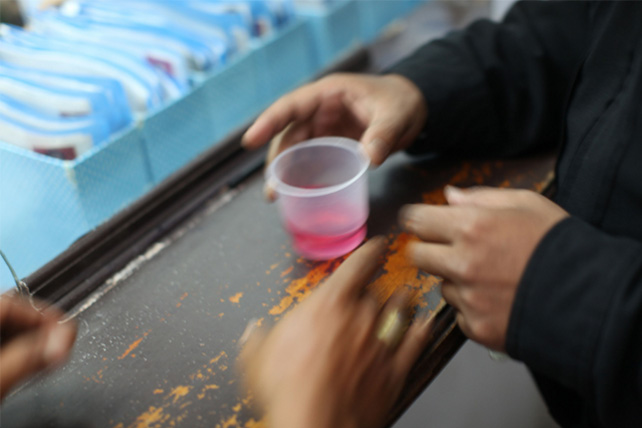As the highly potent opioid fentanyl continues to drive accidental overdose deaths in Canada, it seems increasingly important for people to be able to test the contents of their drugs – however, there are concerns this could have unintended consequences.
There is an ongoing crisis of fentanyl deaths across Canada. In the province of Alberta, the number of fatal fentanyl overdoses reached 343 deaths in 2016, an increase from 257 deaths in 2015. The drug contributed to 922 deaths in neighbouring British Columbia in 2016, leading to the province's health minister calling on the national government to "declare a federal public health emergency".
In November 2016, Health Minister Jane Philpott warned that “there are deaths virtually every single day as a result of opioid overdoses. And some of those, in fact increasing numbers of those, are associated with illicit substances including, of course, fentanyl”.
There have been increasing reports of fentanyl being used to cut – or even substituting – heroin, as the former is cheaper and easier to synthesise. Heroin has been almost completely substituted with fentanyl in the British Columbia city of Vancouver, according to Vice. Overdose symptoms can occur within seconds of fentanyl consumption, LiveScience reports.
For people who seek out fentanyl and for those who inadvertently encounter it, information about the contents of a drug purchase could be life-saving. For example, knowing the estimated quantity of fentanyl in a heroin purchase could inform one’s decision on how much to inject, or could even persuade someone to discard the batch entirely.
In an interview with the US’ National Public Radio, syringe exchange clients in the state of Massachusetts described how they would taste their drugs for fentanyl.
"It's slightly bitter, but it's mainly sweet if it's fentanyl. If it’s heroin, you can tell right away because it's got a bitter taste and it's a long-lasting aftertaste," one client said. "I will not put anything in my arm before I taste it."
While such an approach may be useful, it is hardly reliable.
Rather than taste-testing or starting with a tester shot, many harm reduction advocates argue that what’s really needed is a fentanyl drug test.
In March, the AIDS Committee of Ottawa (ACO) initiated a project called Where’s the Fent? which offers instant urine test strips to individuals who want to know if they have inadvertently exposed themselves to fentanyl. Functioning like a pregnancy test, participants receive their results within minutes—but at that point, the results are informative rather than preventive.
“We really need to start talking about pre-use interventions,” says Caleb Chepesiuk, harm reduction coordinator at the AIDS Committee of Ottawa (ACO).
Pre-use drug testing does exist, but it is mainly targeted at festivalgoers who seek to test the purity of their MDMA, or other so-called “party drugs”. One drug checking/pill testing site in British Columbia, run by the non-profit ANKORS, is looking to change that, by raising money to purchase a device that can test for fentanyl.
Meanwhile in Toronto, drug testing initiatives even have support from some local officials.
"People use drugs," said Joe Cressy, a local Toronto councillor. "So telling people not to use drugs doesn't work; in fact, it leads to more deaths unnecessarily. But if people know what's in those drugs we can help to prevent the unnecessary loss of life."
Nevertheless, concerns persists around the inaccuracy of testing tools, and the unintended consequences of informing individuals of their drugs’ contents.
In October 2016, a pharmacy in Manitoba briefly sold fentanyl tester kits for $5 to anyone who sought them. These kits allowed individuals to "mix a small amount of a water-soluble street drug like cocaine or heroin into water and then dip a test strip to see if the drugs are laced with fentanyl", CBC reports.
However, these kits were swiftly pulled from the shelves when the College of Pharmacists of Manitoba objected to their use "due to the possibility of false negatives and [because the tests are] strictly approved for urine samples [only]".
The pharmacy’s owner, Michael Watts, challenged the College’s claim that false negatives will lead people who use drugs to consume a greater amount of the drug out of a false sense of security.
"A false negative does not lead to more drug being used whereas a positive could lead to fewer deaths. We’re dealing with policy-makers who don’t understand the nature of the beast," Watts argued.
Dr Monica Barratt, an Australia-based substance use researcher, has warned that the limited reliability and accuracy of many drug testing methods should not be used as an argument to oppose or discontinue testing. In a January blog post, Dr Barratt wrote that the potential problems with testing justify devoting further government resources towards improving access to, and quality of, pre-use drug testing.
Time will tell if the surge in fentanyl deaths in Canada will foster greater willingness to accept pre-use drug testing as a harm reduction strategy. While the value of such an approach is clear, it also appears essential for more research to be undertaken in the field, so that harm reduction advocates may assuage fears about false negatives and other potential risks.


